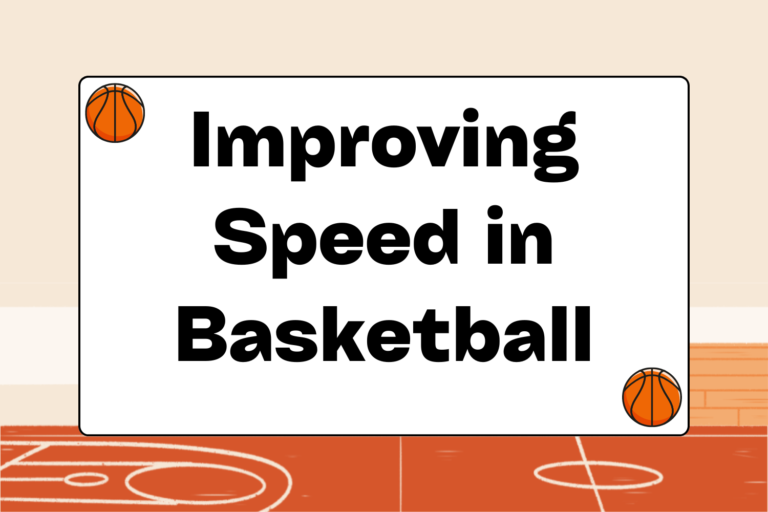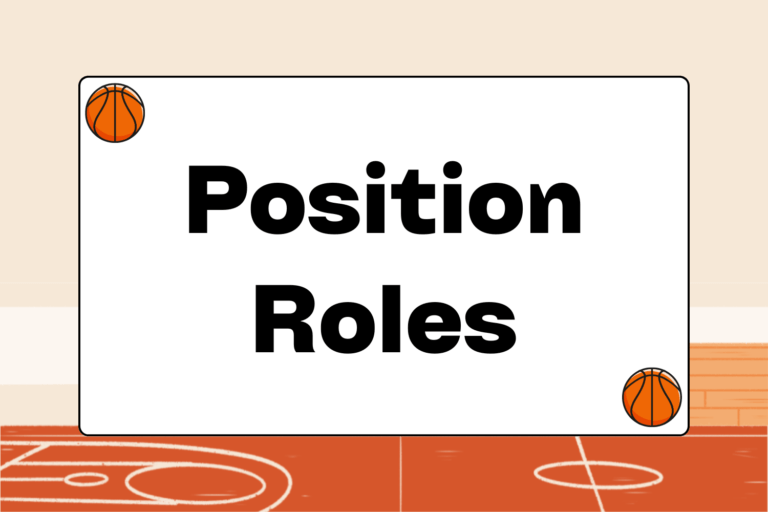Defending the low post starts and ends with good defensive positioning. Good positioning gives you the ability to react quickly to the offensive player’s moves and adjust to deny an entry pass. Proper defensive position in the low post means:
- You stay lower than your opponent, with your eyes roughly at shoulder level.
- Your knees are bent and your feet are wider than shoulder-width.
- You have good balance and aren’t leaning into your opponent.
- You’re not grabbing or reaching in.
When a post player uses a quick offensive move or makes an adjustment to get open, it forces the defender to react quickly. Staying low to the ground with a firm base means that the defender doesn’t have to recoil or re-set his feet before adjusting, and he can react quickly.
The right defensive position also enables you to leverage your body and move the offensive player off the low block and away from the basket.
Ball Denial
Good low-post defense works to deny the entry pass to the low-post offensive player. This requires lower-body and core strength, quick feet, and long arms to deny a pass. The defender must work to obstruct the passing lane, pressure the offensive player, and remove him from his comfort zone.
Fronting the Post Player
Gaining position in front of the post player means you must turn your back to the man and face the ball-handler on the wing or up top. Hands must be up to discourage the overhead lob. The defender must also maintain contact with the post player using his backside, and be able to react quickly when he adjusts to get open.
Fronting the post player is an aggressive defensive strategy and requires help from teammates. There must be perimeter pressure on the ball-handler to clog the passing lanes and prevent a lob pass. Also, the weak-side post defender should be ready to slide across the lane and provide help defense in case of a lob pass.
Fronting the post player also lets the defender slide over and help prevent quick dribble-penetration from the wing player. However, it can be exposed by a good lob pass that leads to easy lay-ups. It’s important to remember that a fronting defender is left out of rebounding position. For this reason, it’s best used along with pressure defenses that force a quick shot.
3/4 Front Ball Denial
3/4 front ball denial puts the defender at the post player’s side, straddling the offensive player by putting one foot in front of him and one foot behind. This strategy lets him use his athleticism and wing span to deny the pass, while letting him maintain position to defend a quick move if the post player’s able to receive a pass. Defending from a post player’s side also allows the defender to quickly turn and snatch a defensive rebound if a shot goes up:
- When the ball’s above the foul line, the defender should be on the post player’s high side, squared up with the baseline and with a hand in his face.
- The defender should maintain solid contact without leaning into the offensive man or grabbing his jersey.
- When the ball goes down to the wing or corner, the defender should pivot and front the offensive player before switching to defend the baseline side. Again, keep a hand in the post player’s face.
The post defender shouldn’t focus on trying to move the post player out of position. Instead, he should deny the entry pass while being in position to defend if the post player receives the ball. The post defender must have quick, active feet and the ability to react quickly and defend the ball.
Hot Tip: Stay in Front
It’s important to never go behind the offensive player when switching sides in 3/4 ball denial. A good offensive player can seal off the defender and prevent him from coming around to deny the pass, creating an easy entry pass and path to the basket.
Playing Behind the Post Player
By playing behind the post player, you’re automatically conceding the entry pass into the low block. It’s important to place one foot between your opponent’s feet, and you need to use your body weight to move your opponent away from the basket and the low block. An offensive player receiving an easy entry pass in his comfort zone leaves the defense at a big disadvantage.
There are a few advantages to setting up behind the post player:
- A weak offensive opponent: When the post player is a limited offensive threat, allowing an easy entry pass can give you a chance to make a steal. Usually, weak offensive players don’t want to receive an entry pass to begin with.
- Defensive rebounding position: You’re in better position to rebound a shot when you’re behind the post player and closer to the basket.
- Set up for a double-team: Playing behind the post player lets you favor one side and open up the man to quick defensive help from the other side. Playing one side is also a good idea if the player usually makes a move to that side.
However, most coaches avoid playing behind the post player, because it exposes the defender to a quick one-on-one offensive move or a pass to a cutting teammate.
What to Avoid
Solid low post defense requires good, balanced position, active feet, and quick raised hands ready to deny or deflect a pass. It also relies on knowing your opponent’s strengths and working to take those away.
When defending on the low block, a few important rules will keep you in the right position:
- Don’t reach: Keep your weight distributed on both feet and avoid losing your balance.
- Don’t overreact to pump fakes: Go up with the man’s body — not the ball.
- Move your feet quickly: Use your feet to get in the best defensive position. Don’t rely on leaning or long arms to distract your opponent.
- Set up first: Beat your man to his favorite spot and establish defensive position first, so that he has to work to get around you.
Work hard, know where to set up to deny the pass, and avoid the cardinal sins of defense in the low post. These strategies will turn post defenders into formidable opponents.





